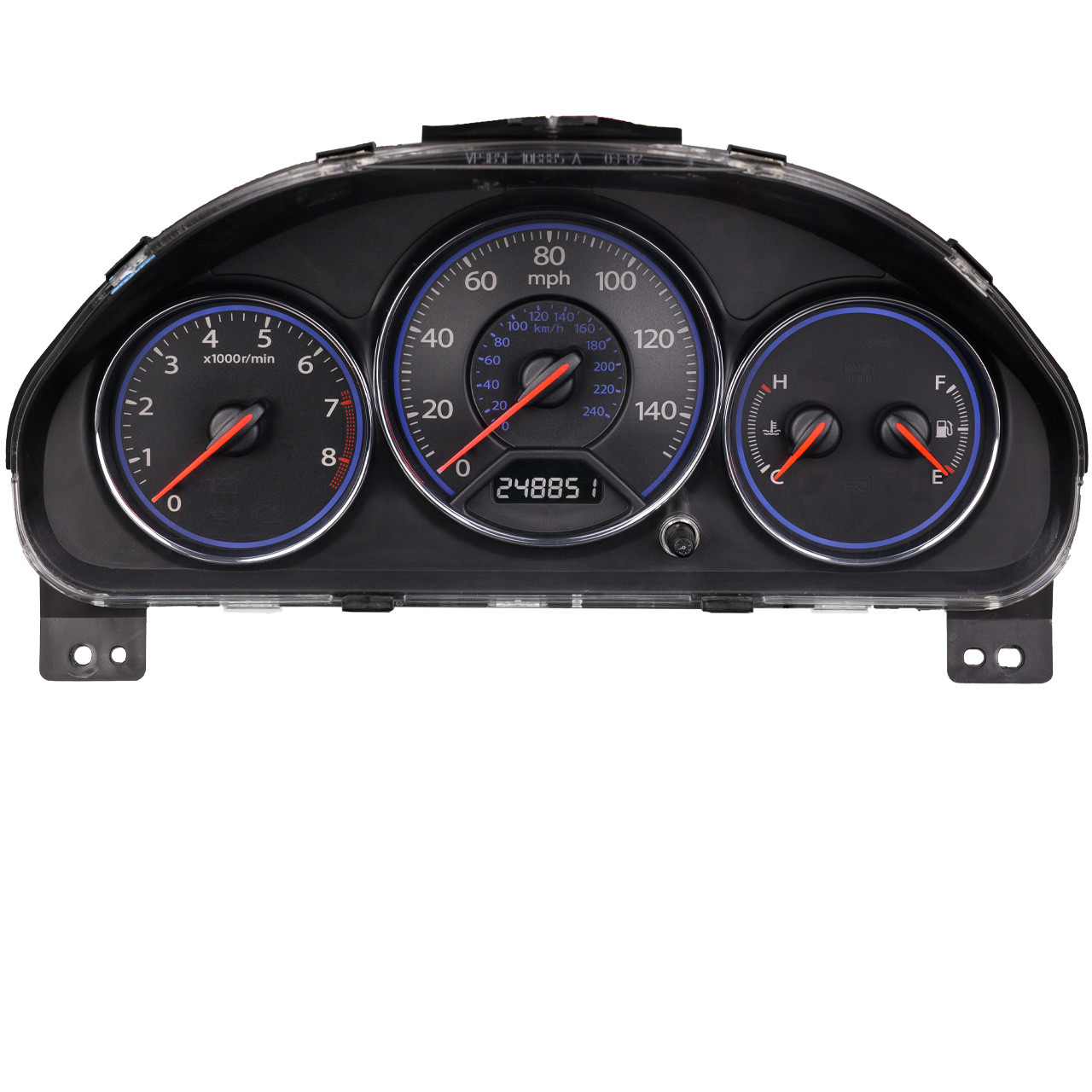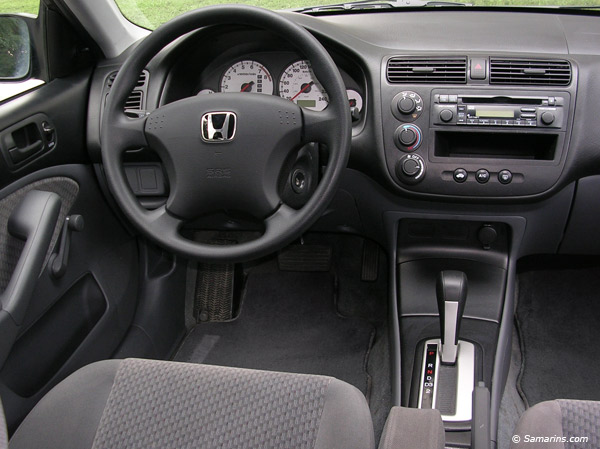Troubleshooting a 2005 Honda Civic often involves addressing common issues like engine overheating and electrical problems. Identifying the root cause quickly is essential for a timely fix.
The 2005 Honda Civic, a favorite among compact car enthusiasts, stands out for its reliability and efficiency. Yet, even the most dependable vehicles face occasional hiccups, requiring owners to tackle troubleshooting head-on. Understanding the typical problems this model year faces can save time and money.
From cooling system woes to malfunctioning power accessories, being prepared is key. This guide aims to equip Civic owners with the knowledge needed to diagnose and address common issues effectively. With a focus on simplicity and actionable advice, we delve into the nitty-gritty of keeping your Civic running smoothly. Remember, regular maintenance is the best preventive measure, but when troubles arise, quick action can make all the difference.
Introduction To 2005 Honda Civic Troubleshooting
The 2005 Honda Civic stands as a reliable and economical option for car owners. Yet, like any vehicle, it may face technical issues over time. This introduction to 2005 Honda Civic troubleshooting aims to help owners identify common problems. It also highlights the perks of diagnosing issues yourself.
Common Issues
Owners often report specific concerns with their 2005 Honda Civics. Recognizing these can save time and stress.
- Engine problems: From overheating to misfires.
- Transmission glitches: Jerky shifts or slipping gears.
- Electrical issues: Faulty wiring or battery drains.
- Cooling system: Leaks or radiator malfunctions.
- Brake wear: Squeaking sounds or reduced response.
Benefits Of Self-troubleshooting
Learning to troubleshoot can be highly beneficial. It empowers car owners and can lead to savings.
- Cost-effective: Save on diagnostic fees.
- Time-saving: Fix minor issues promptly.
- Knowledge gain: Understand your vehicle better.
- Preventive care: Catch issues before they worsen.
Starting Problems
Owners of the 2005 Honda Civic often face starting issues. A range of problems can prevent the car from cranking up. Identifying these issues early can save time and money. Let’s delve into common starting problems and their symptoms.
Dead Battery Symptoms
A dead battery is a common culprit behind starting problems. Look for these signs:
- Dim headlights when the engine is off.
- No dashboard lights upon key turn.
- Clicking sound with no engine crank.
Ignition Switch Checks
Faulty ignition switches can mimic a dead battery. Perform these checks:
- Turn the key to the start position.
- Check for dashboard light changes.
- Listen for a smooth engine turn.
If there’s no change in dashboard lights or engine sound, the ignition switch may be at fault.
Engine Overheating Solutions
Overheating can be a car owner’s nightmare, especially with a vehicle like the 2005 Honda Civic. Understanding how to troubleshoot this issue is crucial. Let’s explore some effective solutions to keep your Civic running smoothly.
Coolant Level Inspection
Checking the coolant level is the first step. A low coolant level can cause your engine to overheat. Here’s how to inspect it:
- Turn off the engine and wait for it to cool.
- Locate the coolant reservoir under the hood.
- Check the level against the markings on the side of the tank.
- If low, add a mix of 50/50 antifreeze and water.
Thermostat Testing
A stuck thermostat can also lead to overheating. Test the thermostat with these steps:
- Remove the thermostat from the engine.
- Place it in a pot of water on a stove.
- Heat the water and watch the thermostat.
- It should open as the water reaches boiling.
If the thermostat does not open, replace it immediately.

Credit: circuitboardmedics.com
Handling Electrical Glitches
Electrical issues in your 2005 Honda Civic can be tricky. They can cause your car to behave unpredictably. But don’t worry. We’re here to guide you through some common electrical problems and how to troubleshoot them.
Fuses And Relays
When electrical glitches happen, fuses and relays are the first things to check. They protect your car’s electrical circuit from damage due to high current. Here’s how you can check them:
- Locate your Civic’s fuse box.
- Inspect each fuse for a broken wire inside.
- Replace any blown fuse with the correct amperage.
- Test the relays by swapping them with ones that work.
Alternator Functionality
The alternator charges your battery and powers the electrical system while the engine runs. Signs of a failing alternator include dim lights and a weak battery. To test your alternator:
- Start the engine.
- Use a voltmeter to check the battery voltage.
- Look for a reading between 13.8 and 14.2 volts.
A voltage outside this range may indicate an alternator issue. Consider getting a professional mechanic to inspect the alternator if you suspect it’s not working properly.
Brake System Maintenance
Brake System Maintenance is crucial for your 2005 Honda Civic. It ensures safety and reliability. Regular checks and timely repairs keep brakes in top shape. Let’s dive into the specifics of maintaining your Civic’s brakes.
Brake Pad Wear Indicators
Brake pads are vital for safe stops. They wear down over time. Your Honda Civic has built-in wear indicators. These indicators make a high-pitched squeal when pads need replacement. Ignoring this noise can lead to unsafe braking and more costly repairs. Check for this sound often. Replace worn pads promptly.
Fluid Level Checks
Brake fluid is essential for your brake system. It transfers force to stop your car. Low fluid levels can cause brake failure. Check the fluid regularly. Do this by locating the reservoir under the hood. It’s typically on the driver’s side. Ensure the fluid is between the “MIN” and “MAX” lines. Top off as needed with the correct type of brake fluid. This is usually DOT 3 or DOT 4 for Hondas.
- Locate brake fluid reservoir
- Check fluid between “MIN” and “MAX” lines
- Top off with correct fluid type

Credit: m.youtube.com
Transmission Issues And Fixes
Let’s troubleshoot common transmission issues in the 2005 Honda Civic. A smooth ride depends on a well-functioning transmission. We’ll explore fixes for fluid leaks and shifting problems.
Fluid Leaks Detection
Spotting transmission fluid leaks is crucial for your Civic’s health. Red or brown puddles under your car are a telltale sign. A sweet or tart odor can also indicate a leak. Regular checks help catch leaks early. Use a flashlight to inspect the transmission area. Look for wetness on the housing and surrounding parts.
- Check under the vehicle for puddles.
- Smell for sweet or tart odors.
- Use a flashlight to inspect the area.
Fixing leaks early prevents major repairs. Tighten loose bolts or replace worn gaskets. Sometimes, a sealant might be necessary. For complex issues, seek a professional mechanic.
Shifting Problems
Shifting smoothly is key for enjoyable driving. The 2005 Honda Civic may experience rough or delayed shifts. This affects ride quality and can strain the engine.
| Issue | Symptom | Fix |
|---|---|---|
| Rough Shifting | Jarring transitions between gears | Adjust or replace the shift cable |
| Delayed Shifting | High RPMs before gear change | Check transmission fluid levels |
To fix shifting issues, start with the basics. Check and top up the transmission fluid if low. Use the manufacturer-recommended type. Replace the fluid if it’s dirty or smells burnt. Sometimes, adjusting or replacing the shift cable is necessary.
For persistent problems, a transmission flush or software update may be the answer. Always consult a trusted mechanic for accurate diagnosis and repair.
Fuel System Diagnostics
Keeping your 2005 Honda Civic running smoothly requires proper fuel system upkeep. Over time, components like the fuel filter and pump may need attention. Let’s diagnose common fuel system issues and get your Civic back on the road.
Fuel Filter Replacement
A clogged fuel filter starves your engine of gasoline. This can lead to poor performance. Signs your filter needs changing include sputtering at high speeds or a car that struggles to start. Replacing the filter ensures a clean fuel flow. Follow these steps:
- Locate the filter near the fuel tank.
- Depressurize the fuel system for safety.
- Remove old filter and install a new one.
- Check for leaks before starting your car.
A fresh filter means better fuel economy and smoother rides.
Pump Testing
If your Civic won’t start or stalls, the fuel pump might be failing. A pump sends fuel from the tank to the engine. To test your pump:
- Listen for a humming noise when you turn the key.
- Use a fuel pressure gauge to check the pressure.
- Compare the reading with the factory specs.
Low pressure indicates a pump issue. Replacing a faulty pump restores power and reliability.
Regular maintenance keeps fuel system troubles at bay. Use quality parts for the best results. Your Civic deserves care for the miles ahead.

Credit: www.samarins.com
Air Conditioning Troubleshooting
Staying cool in your 2005 Honda Civic is essential. Yet, sometimes the air conditioning (AC) fails. Understanding common AC problems helps you stay chill. Let’s troubleshoot two critical areas: coolant recharge and compressor examination.
Coolant Recharge
The AC system needs the right amount of refrigerant to work well. Low coolant makes the air warm. Here’s how to check:
- Locate the service port: Find this on the AC line.
- Pressure gauge: Attach it to check levels.
- Recharge if low: Add coolant carefully.
Remember, too much coolant harms the system. Always follow the manual’s guide.
Compressor Examination
The compressor is the heart of the AC system. It circulates coolant. If it fails, the air stays warm. Signs of trouble:
- Noises: Hissing or grinding are bad signs.
- Visual check: Look for leaks or damage.
- Clutch inspection: Ensure it engages properly.
A pro can fix compressor issues. Regular checks prevent big repairs.
Frequently Asked Questions
What Is The Most Common Problem With Honda Civic?
The most common problem with Honda Civic involves its transmission. Owners frequently report issues such as slipping gears and delayed acceleration.
What Would Cause My Honda Civic Not To Start?
A Honda Civic might not start due to a dead battery, faulty ignition switch, failed starter motor, or empty fuel tank.
What Is A Bad Year For Honda Civic?
The 2001 Honda Civic is often considered a bad year due to widespread transmission failures and other reliability issues. Owners frequently report these problems, making it a year to avoid for potential buyers.
How Do I Reset My Honda Civic?
To reset your Honda Civic, first turn the ignition key to the “On” position. Then, press and hold the trip button until the dashboard lights flash. Release the button, start the car, and check if the reset was successful. Always refer to your owner’s manual for specific instructions.
Why Does My 2005 Honda Civic Overheat?
Overheating in your 2005 Honda Civic could be due to a malfunctioning thermostat, a clogged radiator, or a damaged water pump. It’s essential to check these components and address the issue promptly to avoid engine damage.
Conclusion
Wrapping up, tackling your 2005 Honda Civic’s issues doesn’t have to be daunting. With the right approach and knowledge, you can diagnose and address common problems efficiently. Remember, regular maintenance is key to your Civic’s longevity. Drive safe and keep your trusty Honda running smoothly for years to come.
















